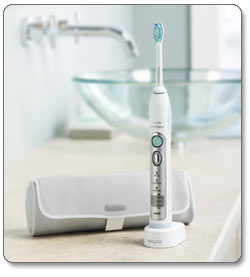Written by Dr. Chaw Su Kyi on February 11, 2015
We have a number of patients ask us this question. The most important aspect whether you use a manual or electric toothbrush is cleaning the teeth on all surfaces to ensure there is no more plaque or food left behind. If you don’t brush well or for long enough time, it doesn’t matter if you have the latest best toothbrush invented!
Electric or Manual toothbrush?
The research shows that an electric toothbrush is often more effective than a manual toothbrush. This is usually because you may not spend long enough brushing your teeth, and when this is the case – the degree of cleaning you achieve with an electric toothbrush is better than a manual toothbrush in this ‘short amount of time’.
Also, there is less risk of damaging your teeth or gums through brushing too hard with an electric brush compared to a manual brush, as the electric brush is gentler.
Fixed braces and tooth brushing

When you are wearing fixed braces, it is very easy for tiny amounts of food to become trapped by the fixed brace. If these food particles are left behind then it can act as a food source for bacteria and plaque build-up. This can then increase your risk of tooth decay or gum problems.
When you are brushing your teeth, you have to consider all four sides of the ‘bracket’ and making sure there is no plaque left behind.
With electric toothbrushes, the actual bristles oscillate or rotate which makes it easier to clean. You really only need to hold the toothbrush in the right position and the rotating brush will ‘do the work’.
There are different types of electric toothbrushes and generally differ in the degree of the ‘round and round’ motion the brush moves in. Oral B, Colgate and Philips are generally the market leaders in electric toothbrushes.
What is a sonic toothbrush?

A sonic toothbrush simply oscillates or vibrates but at much higher frequency than a traditional electric toothbrush and is able to remove plaque between teeth very effectively. Electric brushes rotate 3,000 to 7,500 times a minute, and Sonic brushes make 30,000 to 40,000 strokes per minute.
They are safe to use on your fixed braces and we tend to recommend Sonicare toothbrush to our adult patients especially those having lingual fixed braces.
If you do brush diligently and floss regularly, a sonic toothbrush probably isn’t totally necessary — you already have excellent oral hygiene routine!
It is essential to have an excellent oral hygiene routine when you having orthodontic treatment – brushing your teeth with either electric/ manual toothbrush effectively, using interproximal brushes following the tooth brushing and flossing regularly. We know it will take longer to maintain your excellent oral hygiene routine with your fixed braces. Having an electric toothbrush will likely be more efficient than a manual toothbrush and tend to make your ‘life easier’ during your treatment.